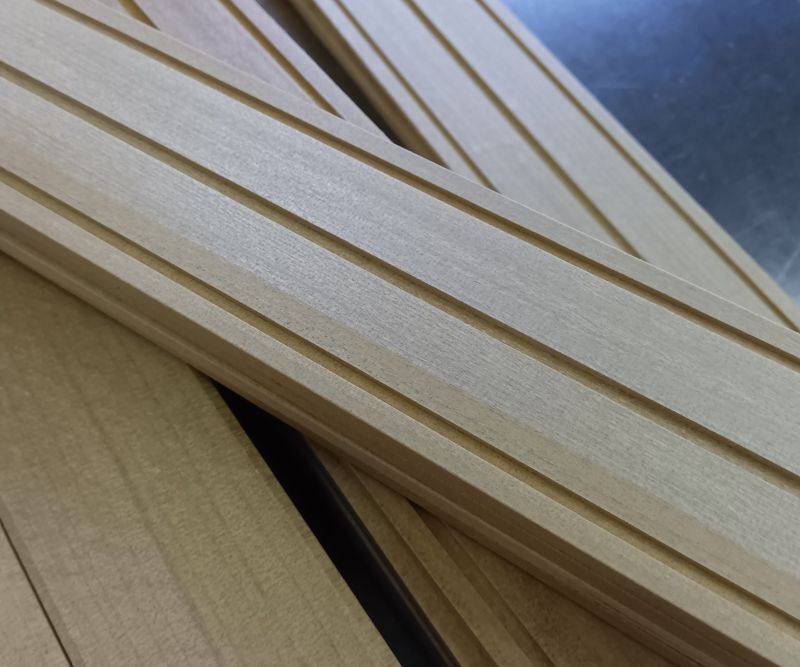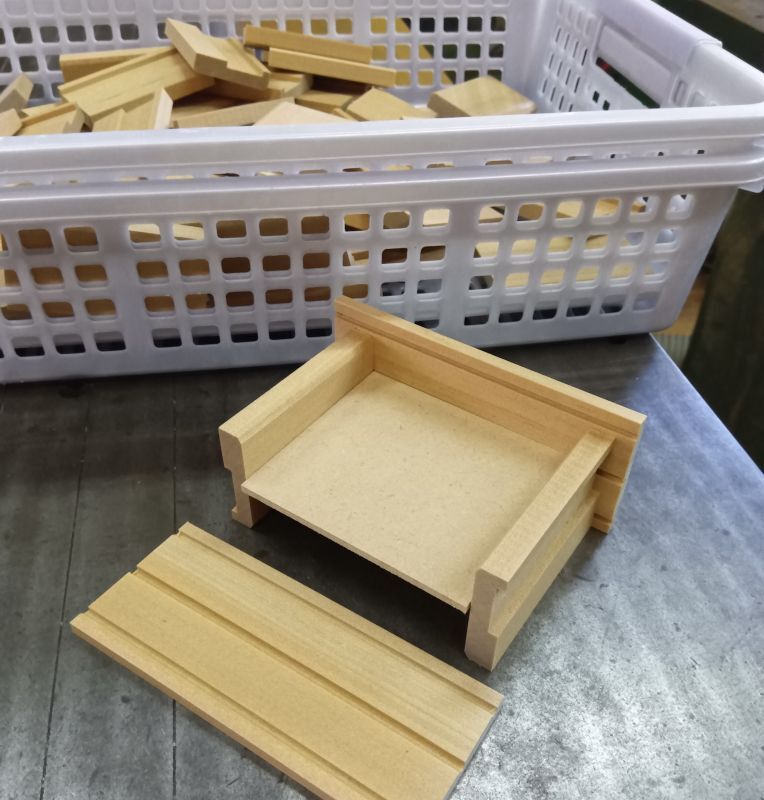4 sun Double compartment
I started working on the 4-sun double compartment Japanese puzzle box yesterday. It's been a while since I last made this type of box. Recently, I made the 4-sun double compartment puzzle boxes two times, both with a 7+5-step mechanism. This time, I'm creating a box with a 7+7-step mechanism. This is partly to fulfill a request from a overseas shop and partly to replenish my own stock.
The 7+5-step box has a structure where you need to open the 7-step mechanism first; otherwise, the 5-step side won't open. However, with the 7+7-step type, either side can be opened with 7 steps, regardless of which side you start with. It's a simpler mechanism. The internal space is also divided exactly in the middle, with both compartments having the same dimensions. So, for me, it's a much easier double-compartment box to make 😊 I believe you can see it in the photos as well, but there's a groove for the divider board positioned exactly in the middle. By the way, the divider board is made from 2.5mm MDF.
This time, I'm going to use my own Ichimatsu yosegi design for the side panels. The shop has requested traditional ko-yosegi design for the top and bottom panels, but I’m still deciding what to do for my own stock. I’ll make a few with the traditional yosegi type, but I also think it would be nice to use natural wood with different colors for the top and bottom. It would be similar to the Japan version of the 5-sun double compartment box I introduced earlier, where different types of wood are used for the top and bottom. (https://www.japanesepuzzlebox.jp/diary-detail/24)
Since it's the double compartment box, I think a design where the top and bottom panels are "contrasting" would be ideal. This could mean using the same design with different colors or making the design itself contrasting. Today, I thought that it might also be interesting to incorporate contrasting "kanji" characters. In Japan, there are several such words or phrases. One example I've used before is "Fujin" (Wind God) and "Raijin" (Thunder God). These two gods also have statues at the famous tourist site, the "Kaminarimon" gate of a temple in Japan.
I'm currently considering various ideas....🧐
The 7+5-step box has a structure where you need to open the 7-step mechanism first; otherwise, the 5-step side won't open. However, with the 7+7-step type, either side can be opened with 7 steps, regardless of which side you start with. It's a simpler mechanism. The internal space is also divided exactly in the middle, with both compartments having the same dimensions. So, for me, it's a much easier double-compartment box to make 😊 I believe you can see it in the photos as well, but there's a groove for the divider board positioned exactly in the middle. By the way, the divider board is made from 2.5mm MDF.
This time, I'm going to use my own Ichimatsu yosegi design for the side panels. The shop has requested traditional ko-yosegi design for the top and bottom panels, but I’m still deciding what to do for my own stock. I’ll make a few with the traditional yosegi type, but I also think it would be nice to use natural wood with different colors for the top and bottom. It would be similar to the Japan version of the 5-sun double compartment box I introduced earlier, where different types of wood are used for the top and bottom. (https://www.japanesepuzzlebox.jp/diary-detail/24)
Since it's the double compartment box, I think a design where the top and bottom panels are "contrasting" would be ideal. This could mean using the same design with different colors or making the design itself contrasting. Today, I thought that it might also be interesting to incorporate contrasting "kanji" characters. In Japan, there are several such words or phrases. One example I've used before is "Fujin" (Wind God) and "Raijin" (Thunder God). These two gods also have statues at the famous tourist site, the "Kaminarimon" gate of a temple in Japan.
I'm currently considering various ideas....🧐

